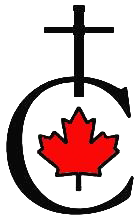WORLDWIDE, the Cursillo Movement is alive in over 60 countries and has generated several million Cursillistas since the first Cursillo 3-Day encounter in 1944 in Mallorca, Spain. In Canada, since 1963, there have been over 150,000 Cursillistas.
CURSILLO TIMELINE
1944 First 3- day Cursillo weekend Cala Figuera.
1948 Pilgrimage to Compostela.
1949 The first numbered Cursillo weekend was in Sanatory of San Honorato – ‘Cursillo de Christendad” of January 7-10th.
1949 The movement was targeting those from away from God and the Church. “Make a friend, be a friend, and bring our friend to Christ”.
1949 A meeting of pilgrims on the road to Compostela. ‘ULTREYA‘, a shout of encouragement on the path ‘ONWARD’!
1957 First 3-Day weekend in North America, in Wako Texas.
1963 St. Paul patron St. of Cursillo.
1965 First 3-Day English speaking weekend in Canada, in Sherbrook Ontario.
HISTORY
Pope Pious XI invited the laity to become more involved in the Church.
Christian Action Group worked to stimulate faith in young people by means of a pilgrimage in 1937, to the shrine of St. James at Santiago. It was a true experience and affirmation of faith in the face of militant atheism and non-belief in Spain, which lead to the civil war of 1936-1939.
De-Christianisation was everywhere after the Civil war. The Young Men’s Christian Action group relied on the Holy Spirit to answer their question: “what should we do to become a leaven and to form Christians into instruments of the gospel in the world today”. To obtain good results, it was decided to prepare through short courses. Cursillos were given for diocesan leaders of the pilgrimage and to group leaders.
These Cursillos were in three parts: the first dealt with the knowledge of faith, i.e. grace, faith obstacles to grace, sacraments, and life in grace; the second addressed the nature, leadership, and aspects of Catholic Action; and the third tacked all the things about the pilgrimage and its organization. These Cursillos took place everywhere in Spain for many years. They lasted a full week.
The founder of the Cursillo Movement, Eduardo Bonnin, was born and lived his life on the Island of Mallorca. He came from a very Christian family of ten children. His father was an almond exporter. From among his siblings, came a priest and a Carmelite nun. In his teens Eduardo began his compulsory military service which lasted nine years. He also discovered the value of friendship and its beauty through life in the military quarters. This marked him for the rest of his life.
Eduardo discovered that faith helps us to be more human and happier. The human search is unsatisfied without God. Therefore, he came to Lluc with his Christian journey already begun. The idea of a pilgrimage led him to go beyond the pilgrimage to Compostela, to embrace the concept of the pilgrimage to the Father to which we are all invited. In his reflection, he wished that the “Cursillos” be opened to all. That it is centered on the basics of faith but with all the enthusiasm and the joy of being a disciple of Jesus Christ. He thought that a full week for a Cursillo was impossible to most people. He suggested a three-day weekend instead. In his “Cursillo” and in the days that followed, he deepened an idea in his heart to have a better world, by the study of a person’s environments. To permeate environments and make them Christian.
Through the youth of the Catholic Action Group under the direction of Bishop Juan Hervas, Bishop of Palma de Mallorca, the Cursillo Movement was born.
ULTREYA began when Eduardo created it for the new Cursillistas, who were too numerous to be integrated into permanent groups, post Cursillo 3-day encounter. As an important part of the Cursillista’s 4th Day, Ultreya is the place to accelerate the conversion that was started during the three days, where one continues to receive the love that maintains the growth effort and also stimulates apostolic commitment.
